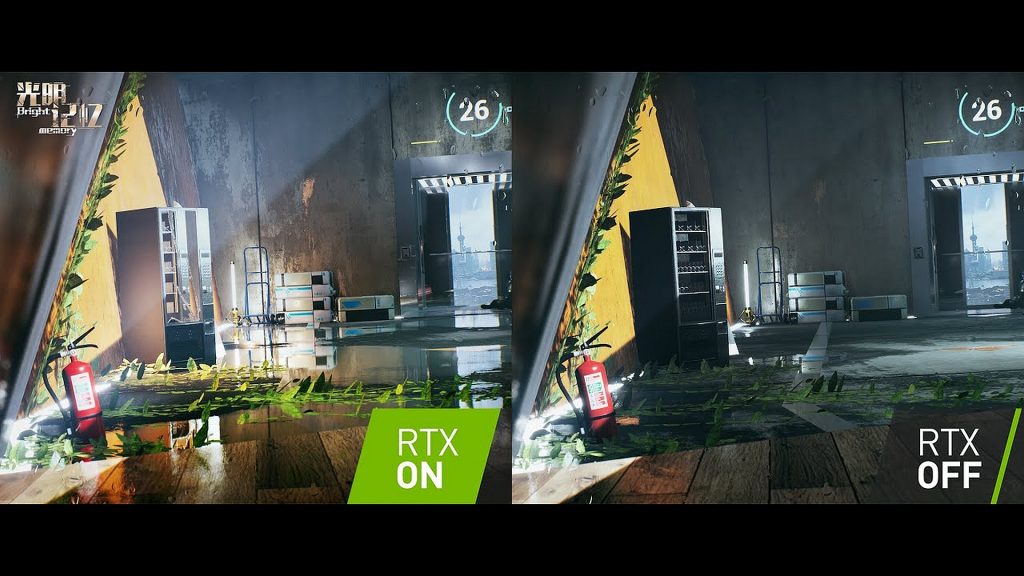Here’s everything you need to know about ray tracing, which will enable PC gamers to enjoy more realistic lighting effects than ever.
At Gamescom 2018, Nvidia unveiled the new GeForce RTX Line of graphics processors. The new line delivers ray tracing technology and according to Nvidia, will usher in “PC gaming’s golden age.”
Hyperbole aside, ray tracing is a really big deal for graphics performance and PC gaming. And if you’re serious about video games and want to get the most appealing and attractive gaming experience possible, ray tracing might just be the feature that gets you there.
But before you double down, let’s talk in detail about what ray tracing is, and explain why it’s such a big deal:
What is ray tracing?
Ray tracing is a rendering technique that creates a graphical image based on virtual light and how that lighting source would interact with virtual objects along an image plane. Ray tracing can replace traditional rendering of lighting effects in games and create a far more life-like depiction of scenes that are based on how light actually interacts with the real world.
The issue, however, is that ray tracing requires a significant amount of power to render the effects. In still images, ray tracing works exceedingly well and creates incredible effects. But in video games, where movement is ongoing and fast, ray tracing can be a problem without the right components and enough power. That’s where Nvidia’s powerful new RTX 20 series graphics cards come in.
Nvidia believes that the best way to understand ray tracing is to analyze how the objects around you are being illuminated by light every second of every day. Ray tracing is essentially following the light beams “from your eye to the objects that light interacts with.”
So, in a gaming context, think of ray tracing as a game’s depiction of light hitting the objects on screen to create more realistic effects.
How will ray tracing change my gaming experience?
Well, for one thing, games with ray tracing turned on should have far better lighting effects. That, of course, should translate to better-looking games and a feeling that you’re playing inside a world that looks far more realistic than the one you’re experiencing right now.
Some people that have tried out ray tracing, like PC Gamer’s Jarred Walton, said that the technology has a profound impact on your gaming experience. He reported that when ray tracing was turned on, the entire environment changed. It also fundamentally changed how he played and interacted with the world around him.
To further illustrate the point, Nvidia has shared several trailers with upcoming games that will support ray tracing
How did ray tracing come to be?
Ray tracing was first detailed in 1969 by IBM’s Arthur Appel, who discussed the tracing of a light ray from from the eye.
It wasn’t until 10 years later, in 1979, that scientist Turner Whitted, who now works for Nvidia Research, issued a paper called “An Improved Illumination Model for Shaded Display.” It ushered in a major advancement in ray tracing and “how to capture reflection, shadows, and refraction” in a virtual environment.
From then on, the pace of innovation was fast. In 1984, for instance, Lucasfilm’s Robert Cook, Thomas Porter, and Loren Carpenter all discussed how ray tracing could be used in filmmaking.
Nvidia said a CalTech professor named Jim Kajiya issued a paper called “The Rendering Equation” that “finished the job of mapping the way computer graphics were generated to physics to better represent the way light scatters throughout a scene.”
Now, we’re here and ray tracing is a reality in gaming.
This all sounds great, but where are the drawbacks?
For one, it’s early days for the technology. And if you really want to experience ray tracing in all of its glory, you’re going to need to spend serious cash to get a rig that can handle it.
In a statement discussing the dawn of ray tracing, Nvidia noted that today’s gamers need to “think ‘GPU first’” when buying a computer. It also noted that about 40 percent of your gaming rig’s cost should come from the GPU. Considering the company’s new GPUs can cost more than $1,000, you could be spending a few grand just to get a computer that can accommodate ray tracing.
Additionally, PC Gamer’s Walton said that he found games to be darker in ray tracing than they were when rasterized.
The issue, it seems, is that developers were assigning colors and shadings to different scenes within games to create an ambiance but also ensure the areas were playing. With ray tracing turned on, the technology takes over and approximates how lighting in scenes should look.
There’s also the issue of hardware and software support and actually getting this technology off the ground. A select few games will actually work with ray tracing in the coming months and chances are, you’re going to need new hardware to get it up and running.
https://www.tomsguide.com/us/what-is-ray-tracing,news-27880.html









Recent Comments